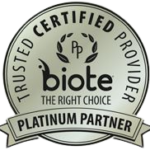Aging, the Sun and Skin Damage
Aging, the Sun and Skin Damage
Aging, the sun and skin damage go hand in hand. With Spring Break upon us, it may be the first time we are out in UV rays for the season. Over the winter, we shed old skin and lose the pigment changes that happened with last year’s tan. Spending time in the sun feels good; its full of Vitamin D, so it is good for you, but it can be harmful to your skin. Over time, it can even cause a cancer called Melanoma.
Because the sun emits ultraviolet (UV) light, which damages your skin and produces sunburn. These rays can cause wrinkles, age spots, and other problems over time. As a result, you can add years to your appearance. According to studies, UV exposure is responsible for 80% of skin aging. (AAD, 2022)
Is it possible to turn back the clock? Thankfully, scientists are discovering how to undo some of the sun’s effects. Although it is impossible to undo all of the harm, there are certain steps you can take to address the problem of aging, the sun and skin damage.
In this article, learn more about how sunburn can affect a person, what to do if it happens when to seek medical help, and how to help prevent sunburn.
Sunburn Signs and Symptoms
According to a recent study, sunburn is caused by inflammation, which causes erythema (a rash) and edema (swelling) causing fluid buildup. It also causes alterations in skin cells. The growth of these sunburn cells, can turn malignant, as well as a decrease in mast cells, which help the immune system. (Health, 2023)
Sunburn symptoms differ from person to person. Anybody can get sunburned, but those with lighter skin are more vulnerable. After being exposed, the skin may become:
- Hot
- Sensitive to the touch
- Painful
- Irritated
- Itchy
- Blistered
Light skin may get crimson. Darker skin may darken with time.
Severe sunburn symptoms can impact the entire body. They are as follows:
- Fever
- Chills
- Headache
- Nausea and vomiting
- A general feeling of being unwell
A person suffering from severe sunburn may require medical assistance. Heat exhaustion or, more seriously, heatstroke can develop in extreme cases. If a person has any of the following symptoms, they should seek emergency medical attention:
- Low blood pressure
- Fainting and dizziness
- Rapid pulse
- General pain throughout the body
- Extreme weakness
- Shallow breathing
- Changes in behavior, such as irritability, confusion, difficulty thinking, or hallucinations
Heat exhaustion is diagnosed by a doctor when the core body temperature rises over normal after sun exposure but does not exceed 104°F (40°C). The core body temperature of a person suffering from heatstroke will be higher than 104°F (40°C). Heatstroke is a potentially fatal illness that requires immediate medical intervention. (WebMD, 2022)
Timeline – Sunburn can cause the following symptoms:
- A rash typically develops 2-6 hours after exposure.
- Skin symptoms peak between 12 and 24 hours following exposure.
- After 4-7 days, the skin peels and flakes off.
Sun Protection Precautions
Regardless of age, countless women (and men) are continually coping with the long-term impacts of unprotected sun exposure. As a general rule, apply sunscreen to your face and neck before leaving the house. It doesn’t matter if you’re going to the beach or the office; small amounts of unprotected sun exposure go a long way.
Use sunscreen every day. That will transform your life. Hats, sunglasses, and remaining in the shade all assist in limiting your sun exposure and delay the early signs of UV damage. If you are worried about further sun damage and need a consultation, book an appointment with us today.
Treatment for Aging Skin
Besides protecting your skin while in the sun with sunscreen, there are popular treatments available such as botox, fillers, peels and topical ointments to reduce the appearance of aging. Check with your doctor before undergoing any of these treatments as each person has different risk factors when it comes to their skin and sensitivity to certain applications.
Have fun in the sun! But don’t forget to take care of and protect your biggest asset, your skin.
Works Cited
“How to Treat Sunburn.” American Academy of Dermatology, 2022, www.aad.org/public/everyday-care/injured-skin/burns/treat-sunburn
Brickell, Susan. “How to Treat and Prevent Sun-Damaged Skin.” Health, Health, 27 Feb. 2023, www.health.com/beauty/anti-aging-skincare-for-sun-damage
“Sun Damaged Skin: Sunburn, Melanoma, Carcinoma, and More.” WebMD, WebMD, 2023, www.webmd.com/melanoma-skin-cancer/ss/slideshow-sun-damaged-skin
“Sunburn: Treatments, Home Remedies, and Prevention.” Medical News Today, MediLexicon International, Dec. 2022, www.medicalnewstoday.com/articles/176441



